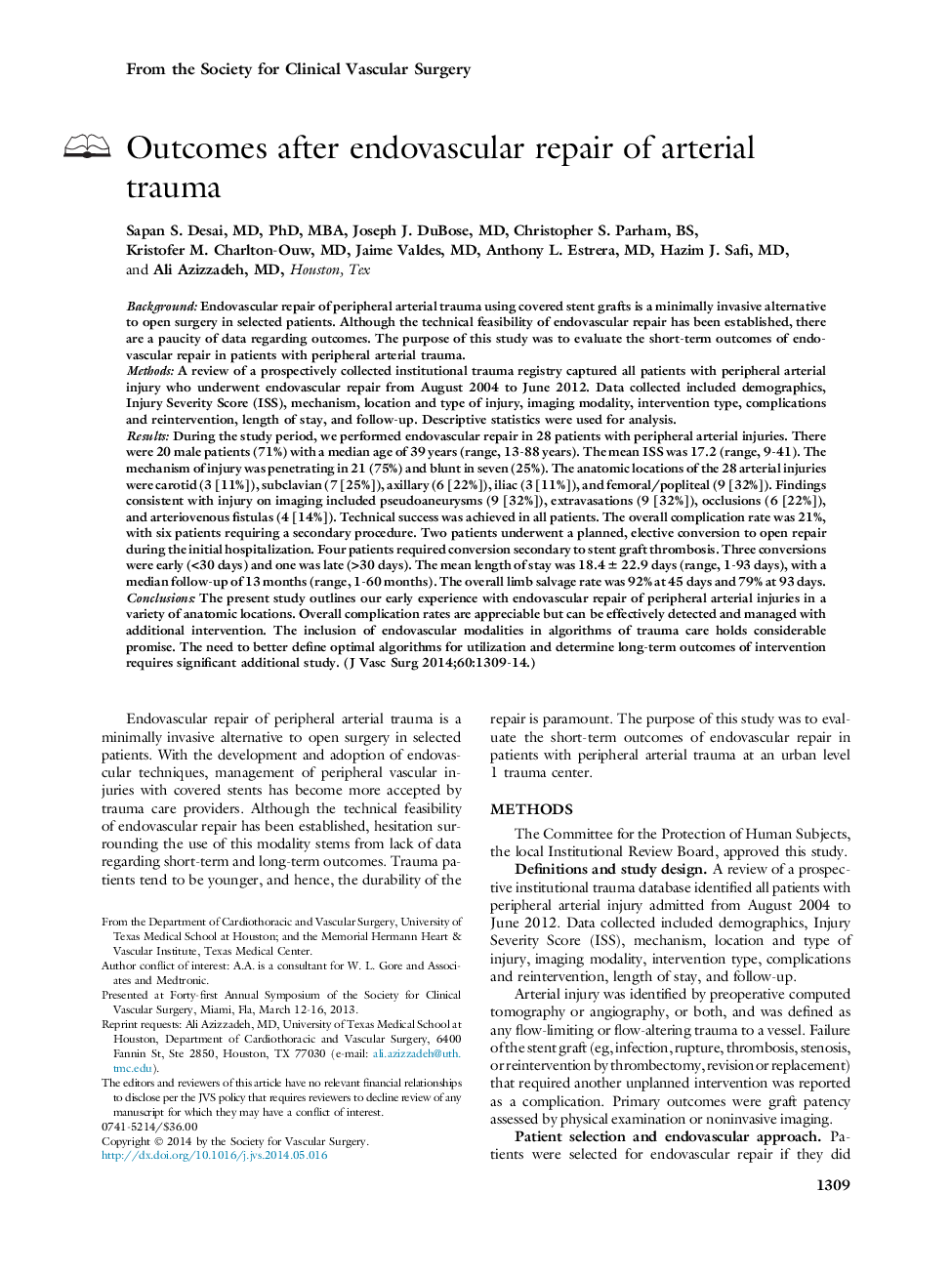| کد مقاله | کد نشریه | سال انتشار | مقاله انگلیسی | نسخه تمام متن |
|---|---|---|---|---|
| 5994111 | 1179827 | 2014 | 6 صفحه PDF | دانلود رایگان |
BackgroundEndovascular repair of peripheral arterial trauma using covered stent grafts is a minimally invasive alternative to open surgery in selected patients. Although the technical feasibility of endovascular repair has been established, there are a paucity of data regarding outcomes. The purpose of this study was to evaluate the short-term outcomes of endovascular repair in patients with peripheral arterial trauma.MethodsA review of a prospectively collected institutional trauma registry captured all patients with peripheral arterial injury who underwent endovascular repair from August 2004 to June 2012. Data collected included demographics, Injury Severity Score (ISS), mechanism, location and type of injury, imaging modality, intervention type, complications and reintervention, length of stay, and follow-up. Descriptive statistics were used for analysis.ResultsDuring the study period, we performed endovascular repair in 28 patients with peripheral arterial injuries. There were 20 male patients (71%) with a median age of 39 years (range, 13-88 years). The mean ISS was 17.2 (range, 9-41). The mechanism of injury was penetrating in 21 (75%) and blunt in seven (25%). The anatomic locations of the 28 arterial injuries were carotid (3 [11%]), subclavian (7 [25%]), axillary (6 [22%]), iliac (3 [11%]), and femoral/popliteal (9 [32%]). Findings consistent with injury on imaging included pseudoaneurysms (9 [32%]), extravasations (9 [32%]), occlusions (6 [22%]), and arteriovenous fistulas (4 [14%]). Technical success was achieved in all patients. The overall complication rate was 21%, with six patients requiring a secondary procedure. Two patients underwent a planned, elective conversion to open repair during the initial hospitalization. Four patients required conversion secondary to stent graft thrombosis. Three conversions were early (<30 days) and one was late (>30 days). The mean length of stay was 18.4 ± 22.9 days (range, 1-93 days), with a median follow-up of 13 months (range, 1-60 months). The overall limb salvage rate was 92% at 45 days and 79% at 93 days.ConclusionsThe present study outlines our early experience with endovascular repair of peripheral arterial injuries in a variety of anatomic locations. Overall complication rates are appreciable but can be effectively detected and managed with additional intervention. The inclusion of endovascular modalities in algorithms of trauma care holds considerable promise. The need to better define optimal algorithms for utilization and determine long-term outcomes of intervention requires significant additional study.
Journal: Journal of Vascular Surgery - Volume 60, Issue 5, November 2014, Pages 1309-1314
